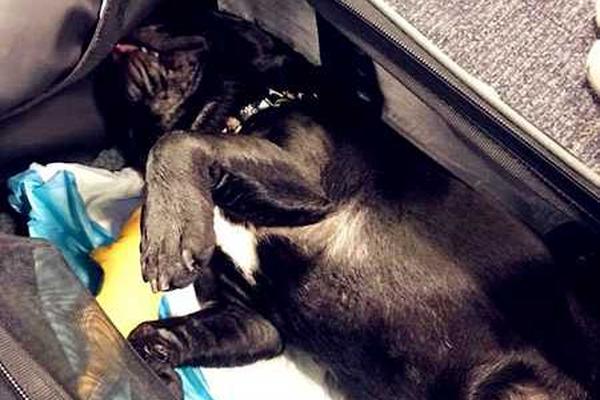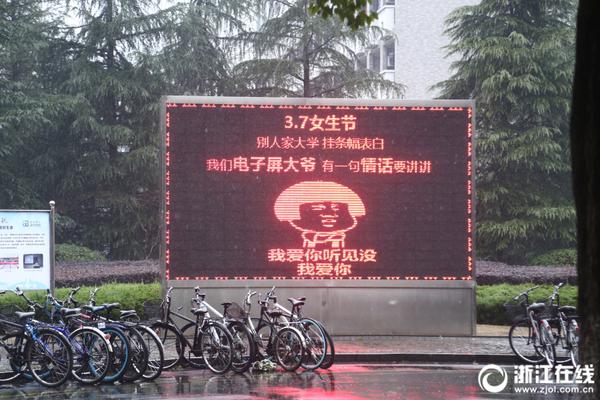
1. You can follow the steps below to install the system disk and put it into the CD-ROM, buy a win7 CD-ROM, and put the system CD-ROM into the optical drive. Turn on the power in the BIOS settings, and then observe the prompts on the screen. Press "F2" to set the BIOS before starting the system.
2. Under normal power-on, put the CD into the optical drive and restart the computer (if it is not normal, you can put it in after the power is turned on). Press DEL or other keys to enter the BIOS, and set the settings to start from DVD-F10-Y-Enter.After entering the PE interface, select "Install System" after entering the PE interface.
3. There are two ways to install the system on the notebook, one is to install the system CD directly into the laptop, and the other is to copy it to the hard disk. After starting the notebook optical drive, put the CD into the optical drive. Then press F12 to enter the menu and select the next step. After entering, select the [Install from floppy disk] option and click Next.
4. Put the system CD, press F12 or Fn+F12 when restarting the notebook, select the DVD option in the pop-up boot menu, and press the car. Boot into the main menu of the CD-ROM, select [1] to install the system to the first partition. Go to this interface and perform the decompression operation of the system.
5. Transfer some important things in the original system to other disks.CD-ROM starts the computer, inserts the CD-ROM, turns on the computer, and selects from. Notebooks generally have shortcut startup options. Different notebook models have different functions such as f2 or f12 on the keyboard. It's best to check it online.

Turn on the computer, press the Delete key when the computer self-checks, (Note: Some computers are E Nter and F1 keys).After entering the CMOS interface, select the Startup option with the left and right keys on the keyboard. Select the first PrimaryBootSequence option and press the Enter key on the keyboard.
Put the CD-ROM to buy a win7 CD-ROM, and put the system CD-ROM into the optical drive. Turn on the power in the BIOS settings, and then observe the prompts on the screen. Press "F2" to set the BIOS before starting the system.
Download the downloaded CD image file iso to a partition other than disk C, such as downloading it to disk F, right-clicking to use WinRAR and other tools to decompress to the current folder or the specified folder. It cannot be decompressed to disk C and desktop, otherwise it cannot be installed. A pop-up dialog box takes a few minutes to perform the decompression process of the CD image file.
In general, the difference between the USB flash drive and the CD-ROM installation system is roughly the only one, and there is not much difference in the installation speed. In addition, it is not difficult to make and install the system nowadays, and both methods of installing the system can also be seen. It depends on what tools your computer supports and what tools you like to use to install.
The two methods have their own advantages and disadvantages. Installing with a CD-ROM can ensure that the system is booted in a non-toxic environment. As long as there is no virus in the CD-ROM, the installed system must have no virus. Moreover, the CD-ROM boot system also has various options such as anti-virus, partition table repair, re-partition, etc.
Let me tell you clearly that the CD-ROM must be simpler. Set the CD-ROM to start, and put the CD-ROM into the optical drive to enter the installation.The USB flash drive also needs to download the system image first, and then use other auxiliary tools to make the USB flash drive into a boot disk. This process is a little troublesome.
1. If it is the original disk version, the installation method is as follows: the first step is to set up light start: the so-called light start means that the computer first reads the optical drive when starting up, so if the optical drive There is a CD with a light start function that can be read out before the hard disk starts (for example, when installing the system from the CD).
2 and 6 interfaces are divided into two ways, one is to upgrade and install (retain the original system file), and the other is to customize installation (not to retain the original system file). If the original system disk space is not large, it is better to use custom installation.
3. Insert the system CD into the computer optical drive, then press the power button of the computer and click the F12 key continuously. Some laptop models are F12 + FN keys.
okx.com login-APP, download it now, new users will receive a novice gift pack.
1. You can follow the steps below to install the system disk and put it into the CD-ROM, buy a win7 CD-ROM, and put the system CD-ROM into the optical drive. Turn on the power in the BIOS settings, and then observe the prompts on the screen. Press "F2" to set the BIOS before starting the system.
2. Under normal power-on, put the CD into the optical drive and restart the computer (if it is not normal, you can put it in after the power is turned on). Press DEL or other keys to enter the BIOS, and set the settings to start from DVD-F10-Y-Enter.After entering the PE interface, select "Install System" after entering the PE interface.
3. There are two ways to install the system on the notebook, one is to install the system CD directly into the laptop, and the other is to copy it to the hard disk. After starting the notebook optical drive, put the CD into the optical drive. Then press F12 to enter the menu and select the next step. After entering, select the [Install from floppy disk] option and click Next.
4. Put the system CD, press F12 or Fn+F12 when restarting the notebook, select the DVD option in the pop-up boot menu, and press the car. Boot into the main menu of the CD-ROM, select [1] to install the system to the first partition. Go to this interface and perform the decompression operation of the system.
5. Transfer some important things in the original system to other disks.CD-ROM starts the computer, inserts the CD-ROM, turns on the computer, and selects from. Notebooks generally have shortcut startup options. Different notebook models have different functions such as f2 or f12 on the keyboard. It's best to check it online.

Turn on the computer, press the Delete key when the computer self-checks, (Note: Some computers are E Nter and F1 keys).After entering the CMOS interface, select the Startup option with the left and right keys on the keyboard. Select the first PrimaryBootSequence option and press the Enter key on the keyboard.
Put the CD-ROM to buy a win7 CD-ROM, and put the system CD-ROM into the optical drive. Turn on the power in the BIOS settings, and then observe the prompts on the screen. Press "F2" to set the BIOS before starting the system.
Download the downloaded CD image file iso to a partition other than disk C, such as downloading it to disk F, right-clicking to use WinRAR and other tools to decompress to the current folder or the specified folder. It cannot be decompressed to disk C and desktop, otherwise it cannot be installed. A pop-up dialog box takes a few minutes to perform the decompression process of the CD image file.
In general, the difference between the USB flash drive and the CD-ROM installation system is roughly the only one, and there is not much difference in the installation speed. In addition, it is not difficult to make and install the system nowadays, and both methods of installing the system can also be seen. It depends on what tools your computer supports and what tools you like to use to install.
The two methods have their own advantages and disadvantages. Installing with a CD-ROM can ensure that the system is booted in a non-toxic environment. As long as there is no virus in the CD-ROM, the installed system must have no virus. Moreover, the CD-ROM boot system also has various options such as anti-virus, partition table repair, re-partition, etc.
Let me tell you clearly that the CD-ROM must be simpler. Set the CD-ROM to start, and put the CD-ROM into the optical drive to enter the installation.The USB flash drive also needs to download the system image first, and then use other auxiliary tools to make the USB flash drive into a boot disk. This process is a little troublesome.
1. If it is the original disk version, the installation method is as follows: the first step is to set up light start: the so-called light start means that the computer first reads the optical drive when starting up, so if the optical drive There is a CD with a light start function that can be read out before the hard disk starts (for example, when installing the system from the CD).
2 and 6 interfaces are divided into two ways, one is to upgrade and install (retain the original system file), and the other is to customize installation (not to retain the original system file). If the original system disk space is not large, it is better to use custom installation.
3. Insert the system CD into the computer optical drive, then press the power button of the computer and click the F12 key continuously. Some laptop models are F12 + FN keys.
Binance Download for PC Windows 10
author: 2025-02-28 08:15OKX Wallet app download for Android
author: 2025-02-28 08:52 OKX Wallet apk download
OKX Wallet apk download
885.57MB
Check Binance market
Binance market
825.18MB
Check Binance app
Binance app
767.71MB
Check Binance login
Binance login
855.69MB
Check Binance market
Binance market
823.22MB
Check Binance login
Binance login
676.26MB
Check Binance Download for PC Windows 10
Binance Download for PC Windows 10
247.51MB
Check okx.com login
okx.com login
221.67MB
Check Binance exchange
Binance exchange
643.57MB
Check Binance login
Binance login
268.59MB
Check Binance wallet
Binance wallet
992.28MB
Check OKX Wallet login
OKX Wallet login
357.71MB
Check OKX Wallet APK
OKX Wallet APK
424.67MB
Check Binance wallet
Binance wallet
277.98MB
Check OKX Wallet apk download latest version
OKX Wallet apk download latest version
486.68MB
Check Binance app download Play Store
Binance app download Play Store
462.25MB
Check Binance wallet
Binance wallet
941.17MB
Check OKX Wallet apk download
OKX Wallet apk download
169.88MB
Check OKX Wallet apk download
OKX Wallet apk download
815.77MB
Check Binance download
Binance download
435.83MB
Check Binance download iOS
Binance download iOS
815.87MB
Check OKX Wallet to exchange
OKX Wallet to exchange
234.32MB
Check Binance login
Binance login
361.88MB
Check Binance US
Binance US
976.32MB
Check OKX Wallet download
OKX Wallet download
188.33MB
Check OKX download
OKX download
877.46MB
Check Binance app download Play Store
Binance app download Play Store
128.65MB
Check Binance Download for PC
Binance Download for PC
297.34MB
Check Binance US
Binance US
341.46MB
Check Binance US
Binance US
371.38MB
Check Binance download
Binance download
532.83MB
Check Binance APK
Binance APK
661.51MB
Check Binance APK
Binance APK
763.69MB
Check OKX Wallet
OKX Wallet
116.22MB
Check OKX Wallet apk download
OKX Wallet apk download
876.16MB
Check OKX Wallet
OKX Wallet
812.11MB
Check
Scan to install
okx.com login to discover more
Netizen comments More
372 攻城野战网
2025-02-28 09:31 recommend
1227 未雨绸缪网
2025-02-28 09:04 recommend
148 风云不测网
2025-02-28 08:08 recommend
2773 不肖子孙网
2025-02-28 07:48 recommend
2882 口口声声网
2025-02-28 07:17 recommend